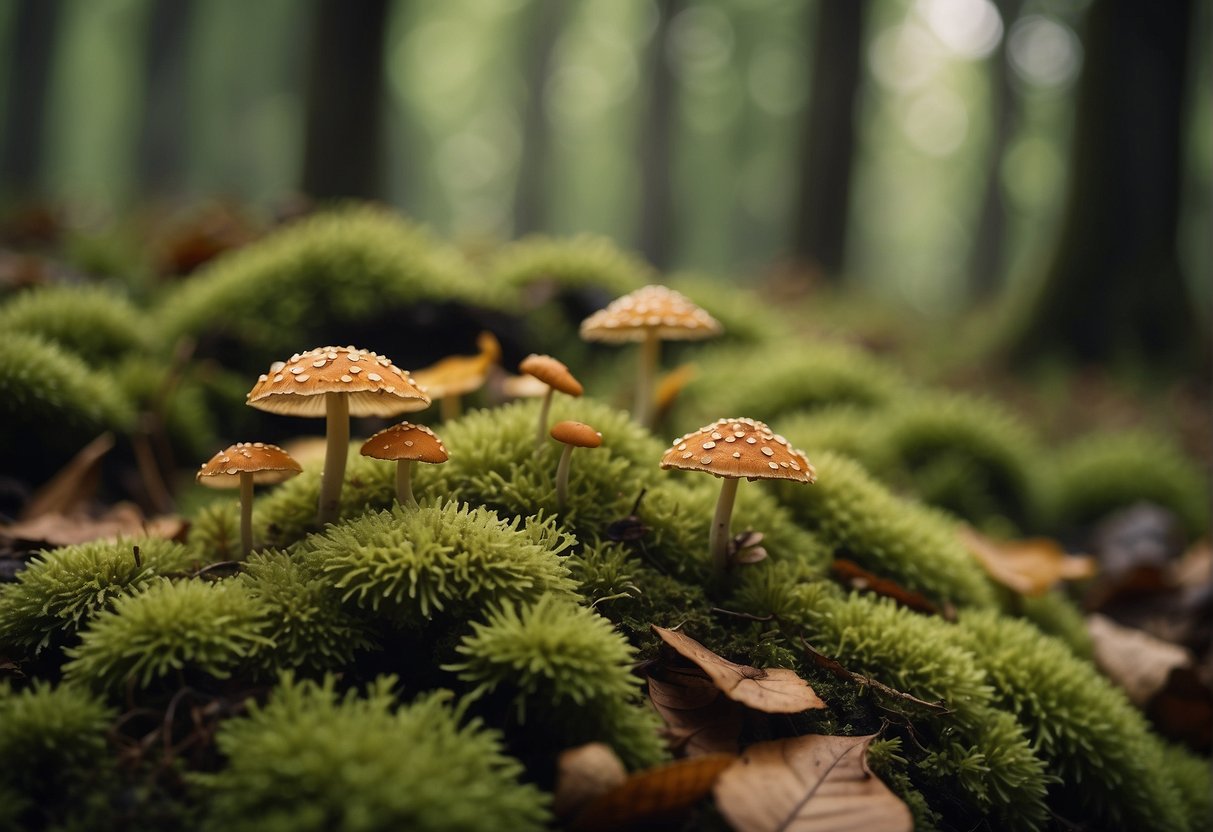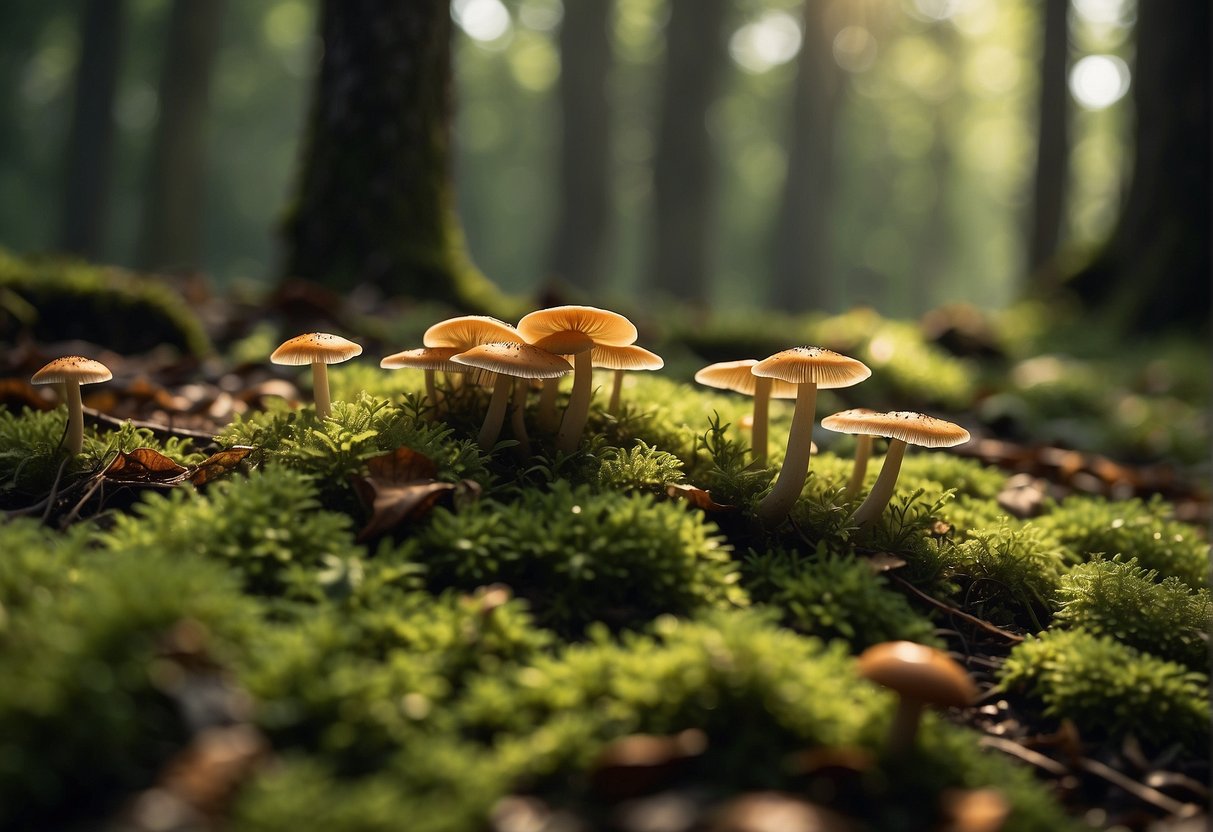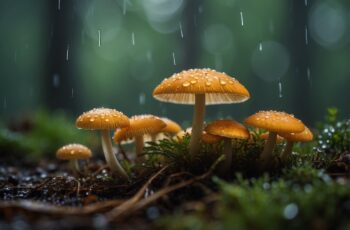Embarking on a journey as a mushroom hunter offers you a unique blend of outdoor adventure and culinary discovery. Wandering through nature’s vast expanses, you have the chance to unearth a variety of edible treasures that thrive in the damp, shaded environments of the forest floor. Mushroom hunting is more than just a casual pastime; it’s a skill that requires knowledge, patience, and respect for the environment.

As you prepare for your next foray into the woods in search of mushrooms, remember to arm yourself with the essentials – a sturdy basket to hold your finds, a sharp knife for clean cuts, and a reliable guide to help you distinguish between the edible and the toxic. Whether you’re a seasoned forager or new to the realm of wild fungi, the world of mushroom hunting offers an enriching way to connect with nature and bring the wild’s bounty to your table.
Exploring the array of mushrooms that flourish in various seasons can be rewarding, but also comes with the responsibility to forage sustainably. By familiarizing yourself with common mushroom habitat and learning to identify local species, you nurture a deeper appreciation for the ecosystem and ensure the ongoing health of the mushroom populations you enjoy. Your foraging pursuits not only lead to delicious meals but also cultivate a harmonious relationship with the landscapes you traverse.
Essential Gear and Techniques for Mushroom Hunting
To successfully embark on the venture of mushroom hunting, you’ll need to know where to look, what tools to bring, and how to forage responsibly. Let’s explore the specifics to ensure your forays into the woods are fruitful and respectful.
Identifying Mushroom Habitats
Finding the right habitat is crucial for locating certain kinds of mushrooms. Look for damp, dense areas in the woods where organic matter is abundant—this is where mushrooms thrive. Different species favor different conditions: some grow best on decaying wood, others prefer the fertile ground of leaf litter. For instance, mushrooms with a ring on their stem often prefer grassy areas, while those with distinctive cap shapes are sometimes found in mossy or pine-strewn environments.
Tools of the Trade
The right tools can make all the difference during a mushroom hunt:
- Knife: A good folding knife is indispensable for cleanly cutting the stem of your find.
- Basket or mesh bag: Allows for the safe transport of your mushrooms, facilitating air circulation to prevent spoiling.
- Field guide: Carry a reliable field guide to help you identify mushrooms, focusing on features like the cap, stem, pores, and ring.
- Compass or GPS: Maintain your bearings in the woods, as it’s easy to get caught up in the hunt and lose track of your direction.
Proper Foraging Etiquette
Mushroom foragers have an unspoken code that ensures the preservation of nature and respect for fellow outdoorsmen:
- Take only what you need: Overharvesting can deplete resources and rob wildlife of their food.
- Tread lightly: Stick to established paths to avoid damaging the fragile ecosystems where mushrooms grow.
- Leave no trace: Whatever you bring into the woods, make sure to take it out again, including any litter or belongings.
By adhering to these guidelines, you not only increase your chances of a successful haul but also help preserve the natural habitat for future generations of foragers.
Mushroom Identification and Safety
Mushroom hunting can be a rewarding outdoor activity, but it’s critical to distinguish between edible and potentially harmful varieties. Understanding safety measures and consulting experts are essential steps to enjoy foraging without risks.
Distinguishing Edible from Poisonous Mushrooms
When you’re foraging for mushrooms, it’s vital to recognize edible species like chanterelles and avoid lookalikes such as the toxic Gyromitra esculenta, also known as the false morel. Key characteristics to observe include the mushroom’s color, shape, and the habitat where it’s found. A mushroom identification guide can help you confirm your finds.
Hazards of Mushroom Poisoning
Eating a poisonous mushroom can result in severe health hazards ranging from stomach discomfort to life-threatening organ damage. Symptoms of mushroom poisoning can vary, so it’s important to seek immediate treatment if you suspect you’ve ingested a wild mushroom. Common signs include nausea, vomiting, and abdominal pain, which can be mistaken for less serious ailments.
Importance of Mycologists
Consulting with mycologists – scientists specializing in fungi – provides you with expert insights into mushroom identification. They can guide your foraging efforts and help ensure that the mushrooms you collect are safe for consumption. Participating in local mycology clubs or workshops can also enhance your knowledge and identification skills. Resources like the Mushroom Study Guides from Midwest American Mycological Information often reflect the collective knowledge of these fungal experts.
Remember, always err on the side of caution and when in doubt, do not eat the mushroom. Your safety is the foremost priority in mushroom foraging.
Popular Mushrooms and Their Ecosystems

When you’re out in the wild, it’s essential to know where to find the mushrooms you’re hunting. Each species has a specific habitat where it thrives, influenced by factors such as moisture, climate, and the surrounding flora.
Morels and Forest Floors
Morels are a prize find in North America and parts of Europe, flourishing in woodland areas. These elusive fungi prefer ash, elm, and poplar trees, emerging in spring as the ground warms. They often appear after a rain, where there’s ample moisture in the forest floors.
Chanterelles and Moist Regions
Chanterelles favor moist regions, nestled among the hardwoods and moisture-laden ground of the Pacific Northwest and various European forests. These golden-hued mushrooms are at home in damp woodland settings where moss and ferns indicate a steady water source. They are often found in clusters, camouflaged amongst the leaf litter.
Oyster Mushrooms and Decaying Wood
Oyster mushrooms are adept at breaking down decaying wood, so you’ll commonly spot them on fallen logs or dead trees. If you’re walking through a hardwood forest or spotting a pile of old timber, keep your eyes peeled for their distinctive fan-like caps. These mushrooms enjoy the nutrient-rich environments that decaying wood provides.
Cooking and Storing Your Foraged Mushrooms
Before you begin preparing your wild mushroom bounty, it’s important to understand proper handling techniques to maximize both flavor and shelf-life. Your efforts in the forest can lead to delicious culinary experiences and preservation for future use.
Preparing Mushrooms for Culinary Use
When you return from mushroom hunting with specimens like Chicken of the Woods or Pleurotus, inspect their color, shape, size, and texture. Gently clean them using a soft brush to remove dirt from the stem, gills, and stalk. For tougher textures, particularly the fruiting body of varieties like Hericium, a damp cloth might be necessary. It’s crucial to avoid soaking them, as this can affect their natural flavors and firmness.
Once clean, slice your mushrooms according to their destined culinary role. Chicken of the Woods can be sautéed to a golden crispness, adding a meaty texture to soups and sauces. On the other hand, Pleurotus brings a delicate, savory note to lighter dishes. Keep slices uniform to ensure even cooking.
Preservation Techniques for Mushrooms
To preserve your foraged mushrooms, consider the following methods:
-
Air Drying: Lay your cleaned mushrooms in a single layer on a kitchen towel or a drying screen to air dry. Once dry, store them in an airtight container.
-
Dehydrating: If you own a dehydrator, arrange the mushrooms in a single layer and follow the machine’s instructions. Dehydrated mushrooms can store for months and can be easily rehydrated.
-
Freezing: For mushrooms like Pleurotus, which have a softer texture, blanching and freezing is an optimal choice. Blanch the slices in boiling water for 1-2 minutes, cool them, then store in freezer bags.
By following these methods, you can enjoy your foraged mushrooms in countless dishes year-round, whether as a robust addition to a winter stew or a fresh topping in a springtime pasta.


